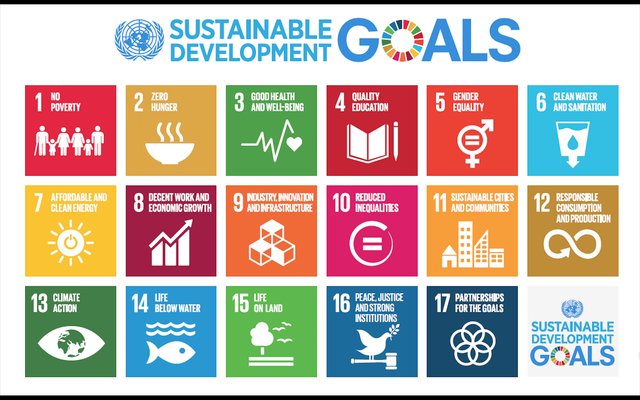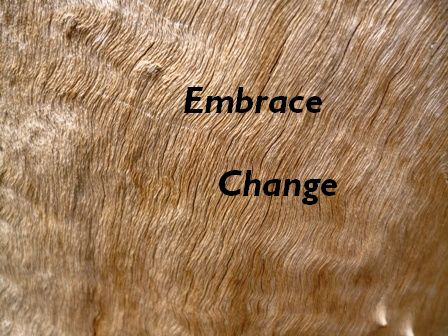The American electorate has picked one of the most powerful climate change deniers on the planet as the steward of U.S. environmental strategy for at least the next four years.
The good news is that sustainable business leaders have more clarity about what to expect from the next administration. It’s now time to prioritize what comes next.
By now, you’ve heard that President-elect Donald Trump has promised to repeal pretty much every climate-related program enacted by his predecessor, President Barack Obama. Actually, if you peek at Trump’s campaign website, he technically doesn’t have a climate agenda, but an energy agenda that specifically includes rescinding “all job-destroying Obama executive actions.” That’s code for executing anything adopted to combat climate change, which Trump has also called a hoax (that may or may not have been invented by China).
Included on Trump’s lengthy hit list for his first 100 days in office are the reversal of moratoriums against “energy production” on federal lands (including national parks); the death of the carbon-emissions-cutting Clean Power Plan adopted in August 2015; and the repeal of the Waters of the United States rule from the same timeframe, which protects thousands of waterways and wetlands.
Trump also has pledged, of course, to cancel the United States’ commitment to the Paris Agreement, the global pact steering the phase-out of global greenhouse gas emissions. (More in a moment on why that’s something that he won’t be able to achieve quickly.)
You can expect Trump to revive talks surrounding the 1,179-mile Keystone Pipeline project, which Trans Canada seeks to pump oil sands petroleum across the United States to the Gulf Coast — and that Obama rejected a year ago after seven years of environmental review.
Did I mention that Myron Ebell, a prominent climate change skeptic, is in charge of Trump’s transition strategy for the Environmental Protection Agency?
As GreenBiz Executive Director Joel Makower wrote last week, grief may be an appropriate response by some to the new regime. But the impending climate-hostile regulatory climate also presents a clear opportunity for corporate and civic sustainability advocates to dig deeper into the meaningful progress they’re already making. To do so, everyone needs to get a lot more vocal about why climate actions make economic sense — Trump is, after all, a businessman.
Talk economics, and he’s bound to listen more closely. At least, that’s the theory.
“One of the clearest messages from the campaign is that America must address inequality within our society and reshape our economy so that all people can thrive,” notes Andrew Steer, president of CEO of the World Resources Institute, in a statement.
“The global transition to a low-carbon, climate-resilient economy is unstoppable. Last month, the IEA sharply raised its projections for solar and wind supply. Nearly 200 of the world’s largest companies have committed to set science-based greenhouse gas targets with the understanding that it’s in their self-interest to do so. More than 600 cities belong to the Compact of Mayors, with clear commitments to address their emissions.”
With that in mind, here are three considerations that should be central to Trump-era sustainability strategies — and not just those that relate to energy.
1. Get better acquainted with local political leaders
How quickly could Trump pull the United States out of the historic Paris agreement? Technically speaking, any of the 200 countries that signed the accord must give four years notice to pull out of the worldwide commitment to cutting greenhouse gas emissions that took effect Nov. 4. Still, there are ways his administration could pull out more quickly, within about a year. For example, it could pull the United States out of the 1992 U.N. Framework Convention on Climate Change, signed by Republican George H.W. Bush and approved by the Senate. Or he could issue a presidential order, especially if the Republican-controlled Congress passes a law requesting him to do so.
The point is, this won’t happen fast, and it’s in the sustainability community’s best interest to make their case at the state and local level. Immediately.
That means getting better acquainted with political influencers at the state and local level who can offer a practical counterpoint to the fossil fuels advocates who dominate Trump’s energy advisory team. Trump’s promise to help reignite the coal industry helped him win states such as Wyoming, Pennsylvania and Kentucky. But the momentum behind new solar and wind generation projects is not to be ignored — because some of the nation’s biggest businesses are hungry for clean power.
More evidence emerged Nov. 14, when Microsoft basically doubled its commitment to buying wind energy to more than 500 megawatts — the projects are in Kansas and Wyoming, both of which helped Trump win the White House. “Our commitment extends beyond greening our own operations because these projects help create a greener, more reliable grid in the communities in which we operate,” noted Microsoft President and Chief Legal Officer Brad Smith in the statement outlining the contracts.
Consumer-level support is also surprisingly bipartisan, considering the presidential election result: new Pew Research data published in late October found that late majorities of both Hillary Clinton and Trump supporters were in favor of expanding the nation’s solar and wind resources.
So, even if soon-to-be-President Trump can deliver on his promise to reignite coal mining, there’s no guarantee that someone will want to buy that ore.
“Utility-scale wind, solar and natural gas-fired power (PDF) are each cheaper today than coal-fired power and that gap is growing wider,” wrote David Spence, professor of law, politics and regulation at the University of Texas at Austin. “Irrespective of federal regulation, these competitors will continue to crowd out coal. Even in states that wish to favor coal-fired power, it will be difficult to convince ratepayers that they ought to pay more for electricity from coal than they could pay for electricity from alternative sources.”
To those who suggest U.S. coal mines could sell abroad, it would seem that bird has also flown. Evidence? Britain just joined the list of countries phasing out coal-fired power plants — its last one could shut down in less than 10 years.
The lesson: employ resources toward making sure state representatives understand the real economics behind solar and wind projects. One great example of what’s possible, even though it’s a couple of years old, was eBay’s push in Utah to evolve state regulations governing renewable energy projects.
2. Work harder to win senior management support for Sustainable Development Goals (SDGs)

When Microsoft announced its latest wind purchasing deal early this week, the person quoted in its disclosure was an executive who reports directly to the software giant’s CEO Satya Nadella. That sort of endorsement matters, and not just for public relations.
With the future of the Clean Power Plan up in the air, one clear path toward winning attention in the C-suite could lie in the United Nations Sustainable Development Goals, which sit outside the direct control of the incoming administration.
Close to 90 percent of the roughly 1,000 CEOs surveyed earlier this year by consulting firm Accenture plan to use the SDGs as a framework for reshaping corporate strategy. More than half of global organizations are already using them specifically to prioritize their sustainable business policies, according to separate research by BSR/Globescan.
“As globalization and digital disruption raise the bar for business, CEOs around the world are embracing the opportunity transform how we live, work and play,” noted Accenture managing director Peter Lacy. “They see the need to reshape approaches and business models to support a responsible and sustainable global economy.”
By tying those strategies to global considerations and potentially valuable emerging markets, sustainability leaders could have a better shot at earning a long-time commitment at the board level.
3. Forge more collaborative partnerships with NGOs
Apple. Google. McDonald’s. Coca-Cola. Walmart. A growing number of the world’s largest companies are collaborating with non-governmental organizations to rethink their approaches to energy consumption, water conservation, forest preservation, waste management and so on.
The World Wildlife Fund, as just one example, works with more than 70 businesses to advance its own environmental agendas. But it’s far from the only NGO seeking to get closer to the corporate world. The Environmental Defense Fund’s partnership with Walmart is legendary, despite its unlikely origins. Even Audubon, which traditionally hasn’t worked with companies, is stepping up its support of partnerships with businesses. Practical alliances are likely to be even more important during the Trump administration — as a way for both sides to build more credibility, align their messaging and to scale resources. (Here’s some perspective from McDonald’s former sustainability chief Bob Langert on how to approach them constructively.)
Which organizations to approach? “You should identify what issue you’re linked to, what commodity is big to you,” WWF CEO Carter Roberts told GreenBiz in March 2015. “That’s where you can make the biggest difference. It’s not the easy stuff, necessarily, but it’s the stuff that’s intrinsic to you, to your reputation, to your business model. That’s where you need to go.”
Apple, for one, is forging ahead in this spirit. The company on Monday evening announced more details around its partnership with The Conservation Fund. It is helping fund a program that enables Forest Society of Maine to monitor more than 32,400 acres of “working forest” in Maine. Its endowment will help ensure that the land, part of the Reed Forest, “won’t be developed or converted to other uses.” The idea is to help promote economical and “ecologically sustainable” production of fiber and other wood products, according to Apple. The forest in question, which includes more than 1 million preserved acres, is a habitat for species including the Atlantic salmon, bald eagle, norther goshawk and Canadian lynx.
“The easement also guarantees recreational activities in the forests, and requires forest harvest plans to address water quality, native fish, and wildlife habitat, soil productivity, recreational values, scenic benefits, an enduring forest, and other conservation values,” the company said.
Source: Green Biz
Women of Green is TURNING UP THE VOLUME of the feminine voice on the planet in order to create the world we know is possible.
